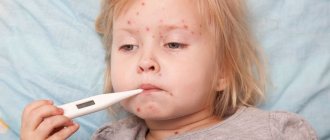Ehlers-Danlos syndrome (according to some sources, Ehlers-Danlos syndrome, EDS) is a rare hereditary collagen pathology that affects the skin, musculoskeletal system and other organs. Other names for the syndrome are “skin hyperelasticity”, cutis hyperelastica, Rusakov desmogenesis imperfecta and Chernogubov-Ehlers-Danlos syndrome. People with this syndrome could be seen in the circus in the past because of their ability to surprise ordinary people with their appearance and movements. Some famous people also suffered from this disease - for example, virtuoso violinist Niccolo Paganini.
History of the discovery of the syndrome
People with this disease were described by Hippocrates in 400 BC. e. in the essay “Airs, Waters and Places” (De aere, aquis, locis). He observed nomads and Scythians with weak joints and multiple scars around them. Hippocrates believed that the scars were traces of cauterization, with the help of which they tried to reduce joint hypermobility. Much later, in 1657, the Dutch surgeon J. Van Meekeren (1611–1666) described a small Spaniard with very elastic skin. A boy named George Albs could stretch the skin of his chin to his chest, and the skin of his knees to the middle of his shins, but this only affected the right half of his body. World-famous violinist and composer Niccolo Paganini (1782–1840) had hypermobile joints, a thin physique, and a deformed chest—all symptoms characteristic of a carrier of Ehlers-Danlos syndrome. At the end of the 19th century, some patients with EDS performed as people with unusual abilities in traveling shows, such as the “elastic lady” described by American doctors George M. Gould and Walter L. Pyle. For a long time, the diversity of clinical manifestations of the syndrome did not allow a detailed description of all forms of the disease.
Classification and name
The first detailed description of EDS was presented by the Russian doctor at the Myasnitskaya Hospital in Moscow, Andrei Chernogubov, at the Moscow Venereological and Dermatological Society in 1892. He described two patients with increased mobility of large joints. One of them was a 17-year-old boy with epilepsy who had fragile and hyperelastic skin that was unable to hold sutures.
Later, in 1901, Danish dermatologist Edvard Lauritz Ehlers published a description of a patient with weak joints and hyperelastic skin, with a predisposition to bruising. He demonstrated it at the Danish Dermatological Society in 1899. Seven years later, French physician Henri-Alexandre Danlos examined a patient with vascular skin lesions on the elbows and knees. Afterwards, separate descriptions of this syndrome appeared in both the USA and England, and by 1966 the total number of reports had increased to 300. In 1936, the English dermatologist Frederick Parkes Weber combined all cases with hyperelasticity and fragility of the skin, as well as hypermobility joints. He called the new disease “Ehlers-Danlos syndrome.”
In 1972, the first molecular defect in collagen was discovered in EDS. In 1986, at the International Congress on Hereditary Connective Tissue Diseases in Berlin, 9 types of Ehlers-Danlos syndrome were identified, but in 1997, in Villefranche-sur-Mer (France), experts developed and adopted a more precise classification. It already had 6 types of EDMS:
- classical;
- hypermobile;
- vascular;
- kyphoscoliotic;
- achondroplasyplastic;
- dermatosparaxis.
Ehlers-Danlos syndrome
Ehlers-Danlos syndrome is a heterogeneous group of hereditary connective tissue diseases, which are based on insufficient development of collagen structures in various body systems. It manifests itself as pathology of the skin, musculoskeletal system, cardiovascular system, and eyes. Refers to monogenic diseases with different types of inheritance: autosomal dominant, autosomal recessive and X-linked.
The development of the pathological process is based on a violation of various stages of the biosynthesis of collagen, one of the main proteins of connective tissue. The end result of each of the mechanisms of pathology formation is the same - a decrease in the stability of collagen fiber. The generality of clinical manifestations in Ehlers-Danlos syndrome is due to the fact that elements of the affected connective tissue are present in almost all tissues and systems of the body. The diagnosis is established on the basis of anamnestic information (delayed motor development, poor wound healing, tendency to bleeding and ecchymosis, dislocations and subluxations), a characteristic clinical picture (hyperelasticity and fragility of the skin, hypermobility of the joints in combination with pathology of the heart, eyes, etc.).
According to the classification of hereditary connective tissue diseases, there are 9 forms of Ehlers-Danlos syndrome, differing in the characteristics of the clinical picture and the type of inheritance.
Characteristic signs of Ehlers-Danlos syndrome type VI are an autosomal recessive type of inheritance, muscle hypotonia, kyphoscoliosis, ophthalmopathologies (myopia, ruptures of the eyeball, corneas as a result of minimal trauma, spontaneous retinal detachment), and other signs of connective tissue pathology. In most patients, the cause of the disease is mutations of the PLOD1 , leading to a decrease in the activity of the enzyme lysine hydroxylase, which catalyzes the formation of hydroxylysine in collagens. The hydroxyl groups of hydroxylysine residues are binding sites for carbohydrate units: galactose and glycosylgalactose; in addition, the presence of hydroxylysine is necessary to maintain the stability of intermolecular collagen compounds.
The Center for Molecular Genetics LLC is conducting research on two common mutations in the PLOD1 gene: 8.9 KB duplication and Arg319X.
Ehlers-Danlos type VI syndrome
Diagnosis criteria
This classification not only systematizes the forms of the syndrome, but also identifies major and minor criteria for diagnosing Ehlers-Danlos syndrome, which is why it is often called the Villefranche diagnostic criteria.
Major diagnostic criteria:
- Thin translucent skin with a visible venous pattern.
- Predisposition to vascular, intestinal and uterine ruptures or weakness of these structures.
- Easy bruising and bleeding.
- Characteristic facial features: wide-set eyes, depressed middle part and epicanthus fold at the inner corner of the eye, covering the lacrimal tubercle
Some minor diagnostic criteria:
- Premature aging of the limbs (acrogeria - atrophy of the skin of the hands and feet).
- Hypermobility of small joints (interphalangeal and metacarpophalangeal joints of the hand).
- Rupture of tendons and muscles.
- Clubfoot.
- Pneumothorax/pneumothorax.
- Retraction (sagging) of the gums, their underdevelopment.
- Complicated family history, sudden death of close relatives.
Two or more major criteria allow one to suspect EDS; laboratory confirmation is required for clarification. If only small criteria exist, then this is not an EDS - there must be at least one large criterion.
Hypermobile EDMS
It is inherited in an autosomal dominant manner and is associated with the type 3 collagen gene COL3A1. Occurs in one person per 10,000–15,000 population. The dominant symptom is increased mobility of large and small joints, accompanied by pain. Dislocations and subluxations can occur spontaneously or due to minor injuries. Symptoms occur regardless of age, but in children with Ehlers-Danlos syndrome it is more difficult to diagnose due to the physiological weakness of the ligamentous apparatus of the joints. Patients with this type of EDS are also characterized by early development of osteoporosis (almost immediately after 30 years). This type of EDS is also characterized by functional disorders of the large intestine, hypermobility of the esophagus, gastroesophageal reflux and gastritis.
Ehlers-Danlos syndrome
In total, there are 10 types of Ehlers-Danlos syndrome, differing in genetic defect, pattern of inheritance and clinical manifestations. Let's consider the main ones:
Type I
Ehlers-Danlos syndrome (classic severe) is the most common variant of the disease (43% of cases) with an autosomal dominant type of inheritance. The leading symptom is hyperelasticity of the skin, the extensibility of which is increased by 2-2.5 times compared to the norm. Characterized by hypermobility of the joints, which is generalized, skeletal deformities, increased vulnerability of the skin, a tendency to external bleeding, scar formation, and poor wound healing. In some patients, the presence of molluscum-like pseudotumors and varicose veins of the lower extremities is detected. Pregnancy in women with type I Ehlers-Danlos syndrome is often complicated by premature birth.
Type II
Ehlers-Danlos syndrome (classic mild course) - characterized by the symptoms described above, but less pronounced. Skin extensibility exceeds normal by only 30%; hypermobility is observed mainly in the joints of the feet and hands; bleeding and tendency to scarring are insignificant.
III type
Ehlers-Danlos syndrome – has autosomal dominant inheritance, benign course. Clinical manifestations include generalized joint hypermobility and musculoskeletal deformities. Other manifestations (hyperelasticity and scarring of the skin, hemorrhages) are minimal.
IV type
Ehlers-Danlos syndrome – rare, severe; can be inherited in different ways (dominant or recessive). Hyperelasticity of the skin is insignificant; increased mobility of only the joints of the fingers is noted. The leading manifestation of this type of disease is hemorrhagic syndrome: a tendency to form ecchymoses, spontaneous hematomas (including in internal organs), ruptures of hollow organs and blood vessels (including the aorta). Accompanied by high mortality.
V type
Ehlers-Danlos syndrome - has X-linked recessive inheritance. It is characterized by increased skin extensibility, moderately expressed joint hypermobility, bleeding and skin vulnerability.
VI type
Ehlers-Danlos syndrome is inherited in an autosomal recessive manner. In addition to skin hyperelasticity, a tendency to bleed, and increased joint mobility, there is muscle hypotonia, severe kyphoscoliosis, and clubfoot. A characteristic feature of type VI Ehlers-Danlos syndrome is an ocular syndrome manifested by myopia, keratoconus, strabismus, glaucoma, retinal detachment, etc.
VII type
Ehlers-Danlos syndrome (arthroclasia) - inherited both autosomal dominant and autosomal recessive. The clinical picture is determined by the short stature of the patients and hypermobility of the joints, leading to frequent habitual dislocations.
VIII type
Ehlers-Danlos syndrome is predominantly inherited in an autosomal dominant manner. The leading role in the clinic is played by skin fragility and severe periodontitis, leading to early tooth loss.
X type
Ehlers-Danlos syndrome – characterized by autosomal recessive inheritance; moderate hyperelasticity of the skin and hypermobility of the joints, striae (striate atrophy of the skin), impaired platelet aggregation.
XI type
Ehlers-Danlos syndrome - has an autosomal dominant mode of inheritance. Patients experience recurrent dislocations of the shoulder joints, dislocations of the patella, and congenital dislocation of the hip.
Type IX (X-patterned lax skin) is currently excluded from the classification of Ehlers-Danlos syndrome. In the modern version of the classification of Ehlers-Danlos syndrome, 7 main types of the disease are considered:
- classical (types I and II)
- hypermobile (type III)
- vascular (type IV)
- kyphoscoliosis (type VI)
- arthroclasia (type VIIB)
- dermosparaxis (type VIIC)
- tenascin-X deficiency
Vascular EDS
Develops with an autosomal dominant defect in the COL3A1 gene, which is involved in the synthesis of type III collagen. It is less common than the previous two types - one in 250,000 people. This type is characterized by a high risk of profuse bleeding from internal organs and ruptures of blood vessels. A patient with the vascular type of EDS has thin skin with vessels visible through it. It is precisely because of problems with blood vessels that such patients rarely live past 50 years. The appearance of a patient with the vascular type of EDS can be very characteristic - the face looks emaciated with prominent cheekbones and sunken cheeks, the nose and lips are thin. At the same time, there is no pronounced hyperelasticity of the skin.
The remaining types are much less common than the previous three - there are about 100 cases worldwide. The achondroplasisplastic type of EDS develops due to a defect in type 1 collagen. About 30 cases have been reported. Already at birth, children with Ehlers-Danlos syndrome are diagnosed with hip dislocation; patients suffer from early arthritis, frequent bruising of the skin and its increased elasticity, as well as atrophic scars. Dermatosparaxis - only 10 cases of EDS of this type have been registered in the world. Patients have extremely fragile skin with a soft, loose texture that is prone to bruising easily. Very early on, patients begin to experience chronic debilitating pain in the joints and muscles. Hyperelasticity of the skin manifests itself to varying degrees, but there is no atrophy of scars.
Ehlers-Danlos syndrome - symptoms and treatment
Ehlers-Danlos syndrome is a set of connective tissue dysplasias that differ in inheritance patterns and chemical abnormalities.
In most of the verified observations, an autosomal dominant mode of inheritance is noted.[7]
With the described syndrome, mutations are observed in the DNA structure of genes encoding the structure of fibrillar protein, which forms the basis of connective tissue - collagen.[2]
In types 1 and 2 of the disease, there is a decrease in fibroblast activity, increased production of proteoglycans, a defect in the activity or complete absence of proteins that contribute to normal collagen maturation. A molecular defect is found in Proalfa 1 (V) or Proalfa 2 (V)[3] collagen chains of the fifth type, an altered structure of collagen structures of the “broccoli” type is detected. Inherited according to AD type.[1]
The third type is caused by mutations in the genes for the synthesis of collagen III alpha1, tenascin X, and is manifested by insufficient collagen production, which is associated with damage to the ligamentous apparatus and frequent joint dislocations. Transmitted by AD type.[8]
The fourth type is determined by the insufficiency of production of collagen fibers of the third type, which are part of the structure of the vascular wall, which is manifested by pathology of the cardiovascular system, and the skin is damaged less than in other subtypes of the disease.[3] Ruptures of blood vessels of all sizes are common.
In the fifth variant, a recessive type of inheritance associated with the X chromosome is described, its pathogenesis has not been well studied.[1]
The sixth type is caused by a lack of lysyl hydroxylase protein, which ensures the addition of a hydroxyl group to lysine in the collagen structure, i.e., which is a collagen-modifying enzyme. Transmitted by the AR type. It manifests itself not only by damage to the ligamentous apparatus and dermis, but also by pathology of the visual and muscular apparatus.[5]
In type seven, the modification of the type 1 collagen precursor into collagen is impaired. AR and AD inheritance variants are described. Such patients are characterized by short stature and have severe joint pathology.
In type ten, there is a defect in plasma fibronectin, which takes part in the formation of the intercellular substance.[4] In addition to the classic manifestations of the disease, in type ten there is a blood clotting disorder associated with a violation of the aggregation properties of platelets, and strip-like scars on the skin.[3] Inherited according to the AR type.
Pathologically all types s. Ehlers-Danlos symptoms are manifested by a decrease in skin thickness, pathological orientation and decompactization of collagen structures, a predominance in the number of elastic fibers, hypervascularization, and an increase in the diameter of veins and arteries.
Treatment and prognosis
Patients with EDS are observed throughout their lives by various specialists - therapists, geneticists, orthopedists, physiotherapists, exercise therapy specialists, neurologists, cardiologists, etc., depending on the clinical symptoms. There is no specific treatment. Early diagnosis of Ehlers-Danlos syndrome in children allows one to make a prognosis, select the necessary lifestyle for the patient and reduce the number of complications associated with the underlying disease. Most people with this diagnosis can live relatively normal and long lives. The main condition is to reduce injuries while maintaining sufficient physical activity for the development of the muscular frame. In addition, regular preventive examinations and treatment by a dentist and ophthalmologist are necessary.
Sources
- Federal clinical guidelines for the diagnosis and treatment of Ehlers-Danlos syndrome. Rumyantsev A. G., Maschan A. A., Zhukovskaya E. V. - 2021
- Ehlers-Danlos syndrome—a historical review Liakat A. Parapia and Carolyn Jackson Department of Haematology, Bradford Teaching Hospitals NHS Foundation Trust, and University of Bradford, Bradford, UK.
- Vascular type of Ehlers-Danlos syndrome. M. V. Gubanova, L. A. Dobrynina, L. A. Kalashnikov. — Volume 10. — No. 4–2016. Annals of Neurology.
- Ehlers-Danlos syndrome in a 6-year-old child. E. F. Argunova, O. N. Ivanova, E. E. Gurinova, S. N. Alekseeva. Pacific Medical Journal. - 2014. - No. 2.
Hospitalized patient with Ehlers-Danlos syndrome: possible complications
Materials and methods
A case-control study was conducted using the 2021 National Inpatient Sample.
A total of 2007 patients with EDS were identified using ICD-10 and compared with 4014 patients without EDS according to 5-year age intervals, sex and month of admission.
The average age of patients with EDS was 37 years, of which 84% of patients were female.
The mean length of hospitalization was longer in patients with EDS (4.77 days) than in the control group (4.07 days).
results
Gastrointestinal complications were found in 44% of patients with EDS compared with 18% of controls (odds ratio, 3.57; 95% confidence interval, 3.17 to 4.02; P < 0.0001).
Among the most likely pathological conditions were functional gastric disorders (OR, 5.18; 95% CI, 2.16-12.42; P < 0.0001), unspecified abdominal pain (OR, 3.97; 95% CI, 2.34-6.73; P <0.0001), irritable bowel syndrome (OR, 7.44; 95% CI, 5.07-10.94; P <0.0001) and nausea (OR, 3. 20; 95% CI, 1.95-5.24; P < 0.0001).
Autonomic dysfunction was found in 20% of patients with EDS compared with 6% of controls (OR, 4.45; 95% CI, 3.71-5.32; P < 0.0001).
Postural orthostatic tachycardia syndrome (OR, 223.77; 95% CI, 31.21-1604.46; P <0.0001), orthostatic hypotension (OR, 8.98; 95% CI, 5.36- 15.03; P <0.0001), syncope (OR 3.62; 95% CI 2.23-5.82; P <0.0001), other autonomic nervous system disorders (OR 54.72; 95% CI 7.43-403.00; P <0.0001).
Food allergies were also more likely to develop in patients with EDS (OR, 3.88; 95% CI, 2.65-5.66; P <0.0001), as were cardiovascular complications: mitral valve pathology, aneurysm aorta, arrhythmias (OR, 6.16; 95% CI 4.60-8.23; P <0.0001).
Although patients with EDS had a hospital stay of more than 4 days, there was no significant difference in mortality rates (OR, 0.79; 95% CI, 0.41 to 1.50; P = 0.47).
Conclusion
Hospitalized patients with EDS are more likely to have gastrointestinal, cardiovascular, autonomic and allergic disorders than hospitalized patients without EDS, according to a new study.
Patients with EDS stay in the hospital longer than usual, which may be due to complications during hospitalization.
The reason for longer hospital stays lies in the number and complexity of symptoms in these patients, which can lead to a delay in diagnosis.
Another reason for a long hospital stay is the manifestation of severe chronic pain, which is difficult to relieve in an inpatient setting and then switch to outpatient treatment.
Source:
medscape.com/viewarticle/944006#vp_1









